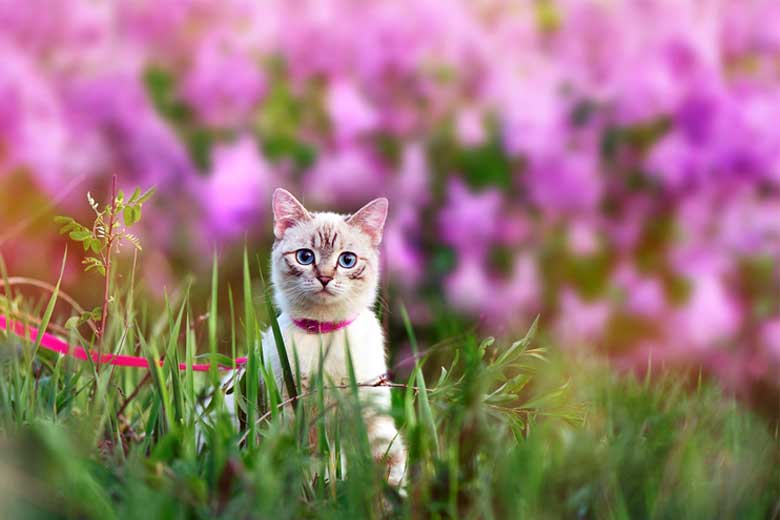If you’ve ever wanted a playful, adventure-seeking companion for life, but instead ended up with a sleepy, fluffy ball tIf you’ve ever wanted a playful, adventure-seeking companion for life, but instead ended up with a sleepy, furry feline that demands food at the crack of dawn, you might have wondered, “Can this adorable loaf of fluff, currently lounging on my keyboard and distracting me from work, enjoy the great outdoors – the open sky, the warm sun, the freshly cut grass, and happily hop into a pile of leaves?”
While not all cats share the same level of enthusiasm for outdoor adventures, there are some feline friends that do enjoy being outside and even walking on a leash.
In this article, we have reviewed the best cat harnesses to ensure your furry companion’s safety and comfort during their outdoor explorations.
Unleash your cat’s adventure: Harness training made easy
As a cat owner, there are a couple of things you need to do first before taking your feline friend for a walk. You can’t just grab a random, old leash hanging from a coat rack in your hallway.
Walking a cat isn’t like walking a dog. If you decide to take your fluffy ball outside, you aren’t actually the one in charge. Walking a cat is more about letting them wander around and explore, while you accompany your four-legged friend and make sure they are safe.
Step #1: Start slow. It’s crucial to begin training indoors. After you’ve purchased the right harness, leave it around for your cat to smell and play with, so they aren’t afraid of it.
Step #2: Strap your cat into the harness, making sure it’s properly fitted – not too tight, so they can easily breathe, and not too loose, so they can’t slip out and escape. Let your cat wear it around the house, even with the leash dragging behind them. Remember, at this point, your cat should be comfortable in the harness and on the leash. If, at any point, your cat starts panicking, feeling uncomfortable or scared, it’s best to stop the training.
Step #3: If you’re that lucky person who has a little patch of grass behind their house, let your cat safely explore the yard on a leash. Open the door, let them sniff around and choose the direction they want to go towards. If, however, you live in a big and bustling city, put your cat in a crate and choose a quiet, remote place where there are no cars, loud sounds, masses of people, or dogs freely running around. If you do spot a curious dog or hear a loud car, you can pick your cat up until the dangerous object is gone.
Some cats may attempt to escape once they know where the door is and what the outside looks like. Make sure your cat knows that the only time they can go out is when they have a harness on, and you’re accompanying them.
Step #4: Stay patient. Remember that every cat is different, and it may take time for them to adjust to wearing a harness.
Tips for success: Overcoming challenges in harness training for a cat
Every cat is unique, and some may present challenges that require extra care and attention. Below, cat owners will find practical tips and techniques to help them navigate the obstacles and achieve success in harness training your feline friend.
Tip #1: Choose the right fit. Make sure the harness fits your cat’s size properly and adjust it as needed for comfort. A well-fitted harness will ensure your cat’s safety and prevent them from slipping out.
Tip #2: Stay positive. Use a calm and encouraging tone when training your cat to wear a harness. This will make the experience enjoyable for them and reinforce positive associations.
Tip #3: Provide distractions. Bring along your cat’s favorite toys or treats when going for walks. This will keep them entertained and focused, making the harness training process smoother.
Tip #4: Be patient. Give your cat time to explore and get used to their surroundings when walking on a harness. Rushing the process may cause anxiety or fear.
Tip #5: Reward and praise. After each successful step, reward your cat with treats and praise. Positive reinforcement will encourage them to continue the training.
Tip #6: Ensure proper vaccinations. Before taking your cat outdoors, make sure they are vaccinated properly. Contact your veterinarian and discuss how you can protect your cat from diseases transmitted by other cats or bugs.
Tip #7: Post-walk check-up. After each walk, carefully examine your cat’s fur for any insects, ticks, fleas, mosquitoes, or injuries. You can also ask your veterinarian for pet-safe repellent spray or wipes for extra protection.
YOU MIGHT BE INTERESTED IN
Why Is My Cat So Lazy?
How to Choose A Best Vet?
Choosing the right harness
First thing’s first – you need to measure your cat. If they’re still a kitten and constantly growing, make sure to purchase an adjustable harness. There are two key areas you need to measure – the neck and the area behind the front legs. With your cat standing, gently wrap a flexible tape measure around their girth area (just behind those front legs). Do the same for their neck area. Harnesses shouldn’t be too tight; you should be able to slide one finger between the harness and your cat.
Get the Right Fit: eHowPets Shows You How to Measure a Cat for a Harness
- For small cats weighing around 5-10 pounds (2.2 – 4.5 kg), a small harness is typically suitable.
- Cats weighing 10-15 pounds (4.5 – 6.8 kg) may require a medium-sized harness.
- And for larger felines weighing 15 pounds (6.8 kg) or more, a large harness would be the best choice.
If your cat isn’t fond of getting professionally measured for a fitted harness, you can lure them in with a treat or a small can of wet food. It works like a charm!
Remember to follow the manufacturer’s instructions carefully. Some harnesses may require adding a couple of inches/centimeters to your measurements for the perfect fit.
The cat harness you choose should be made out of high-quality, durable materials that won’t snap, fall apart, or tear easily at the slightest jump or tug from your cat. Carefully inspect the stitches, individual clasps, and all plastic or metal elements of the harness.
The fit is one of the most important aspects of choosing the best harness for your cat. You want it to fit snugly to ensure your feline friend doesn’t easily escape, but you also don’t want it to be too tight. One way to check if the harness is too loose or too tight is to slide one finger between your cat and the harness. If you can slide in more than one finger, it’s too loose. If you can’t fit one finger, it’s too tight.
Some harnesses come with extra features, such as a leash, reflective tape, or a small bell. Make sure your chosen harness has a place where you can attach the leash for those outdoor adventures.
Safely walking a cat on a harness
Walking your cat on a harness can be a delightful and enriching experience for both you and your feline companion. It’s a chance to explore the great outdoors together, while keeping your furry friend safe and secure. However, there are a few important tips cat parents should keep in mind to ensure these outings are enjoyable for all.
First things first, choose appropriate walking locations. Busy streets or areas with heavy traffic are a no-go. Instead, opt for quiet parks or green spaces where your cat can roam and sniff without the disturbance of loud noises or crowds. Cats are naturally curious creatures, but unfamiliar sights and sounds can easily startle them.
It’s crucial to supervise and monitor your cat closely during the walk. Keep a watchful eye on their body language and reactions. Be prepared to swiftly react if your cat becomes anxious or tries to make a quick escape. A harness offers security, but a cat’s curiosity knows no bounds!
Walking a cat on a harness is a novel experience for most feline friends. Short strolls around the backyard can gradually transition into longer explorations of nearby trails or parks. Every cat has their own pace, and that’s perfectly okay.
YOU MIGHT BE INTERESTED IN
Best Collapsible Cat Bowls
Essential add-ons: Top accessories to pair with your cat’s harness
Taking your feline friend for a stroll on a harness is a fantastic way to enjoy the great outdoors together. But why stop there? With a few clever accessories, you can make these outings even more engaging and enjoyable for your curious companion.
First up, let’s talk treats! Bring along some tasty morsels to reward your cat for good behavior during the walk. Choose small, bite-sized treats that are easy to carry and dispense on the go. A few well-timed rewards can go a long way in reinforcing positive associations with the harness and outdoor adventures.
Next, consider packing a selection of interactive toys. These will keep your cat entertained and engaged as you explore new sights and smells together. Look for toys that stimulate your cat’s senses and encourage them to investigate their surroundings. A feather wand or a catnip-filled mouse can work wonders in keeping your feline friend focused and content during the outing.
YOU MIGHT BE INTERESTED IN
Laser Pointers for Cats
Potential dangers to be aware of when using a cat harness
While using a harness can be an excellent way to let your feline friend explore the great outdoors safely, it’s important to be aware of the potential dangers that come with it. As a responsible cat parent, it’s crucial to be prepared and take the necessary precautions to ensure a fun and worry-free adventure
Danger #1: Escape attempts
Ah, the ever-elusive feline escape artist! Cats are known for their cleverness and agility, so it’s not uncommon for them to try to slip out of their harness while out on a walk. Make sure to properly secure the harness, double-checking all the straps and closures. And, of course, keep a watchful eye on your furry friend at all times to prevent any Houdini-like disappearing acts.
Danger #2: Overheating
Our feline companions can overheat quite easily, especially when wearing a harness on a hot day. To avoid any heat-related mishaps, choose a lightweight and breathable harness material. Avoid walking your cat during the hottest parts of the day, and provide plenty of water and shady breaks for them to cool down.
Danger #3: Entanglement
There’s also a risk of your cat getting tangled in the harness, especially if it’s not fitted properly. Before venturing out, always double-check the fit of the harness, ensuring there are no loose straps or excess material that could pose a risk of entanglement. A well-fitted harness will keep your cat comfortable and secure.
Best cat harnesses for every feline explorer
With a range of options designed to accommodate various body types, activity levels, and personalities, you’ll find the perfect harness to unleash your cat’s curiosity while keeping them secure and content.
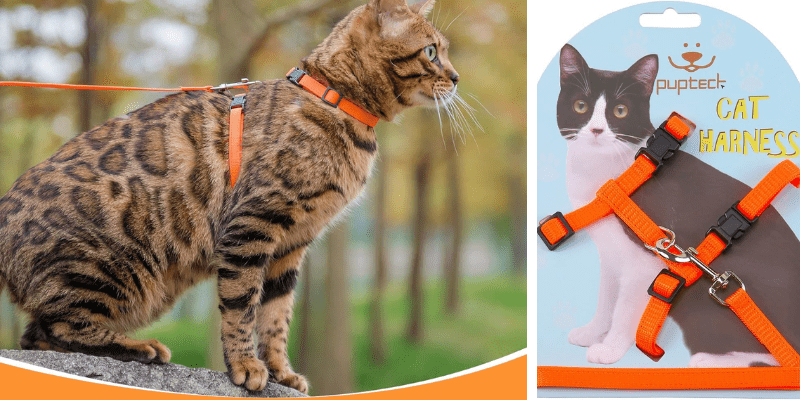
If you’re looking for a harness with solid and sturdy construction, look no further than PUPTECK’s vibrant and colorful options.
This nylon lead and harness are perfect for small cats and puppies under 12 pounds, featuring an adjustable design to fit neck sizes from 18cm to 26cm (7 inches to 10 inches) and chest sizes from 26cm to 44cm (10 inches to 17 inches). The lead length is 120cm (47.2 inches). Ideal for daily walks, jogging, training, and outdoor activities, it also provides comfort for trips to the vet or groomer. The adjustable “H”-shaped harness with durable snap buckles ensures easy use and secure outdoor adventures, preventing your cat from getting lost.
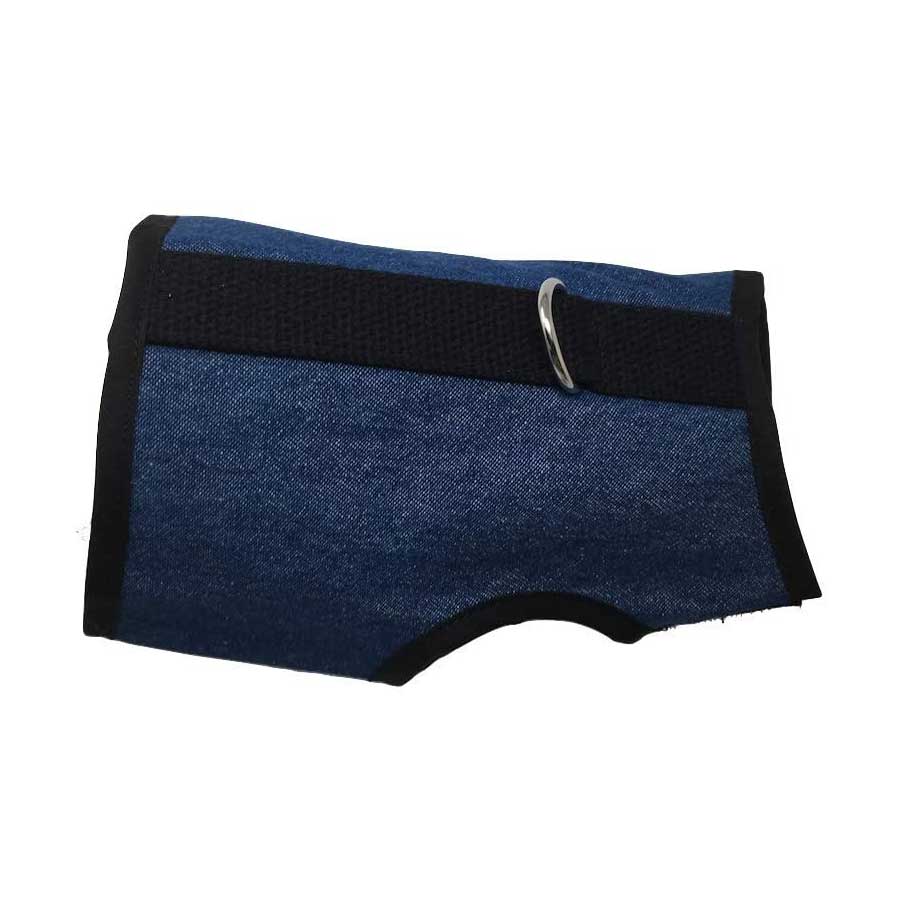
Kitty Holster has been known for a while to be the best cat harness for even the biggest and most talented escape artists. Made from comfortable, ultra-lightweight material, they are lined with soft cotton for your cat’s delicate and precious fur. Comes in a variety of colours and patterns, which will make your cat the star of the neighbourhood. Highly rated by customers for its durability, easy cleaning, sturdiness, and allowance for range of motion. Perfect for walks, car travel, and safe outdoor adventures with your cat.
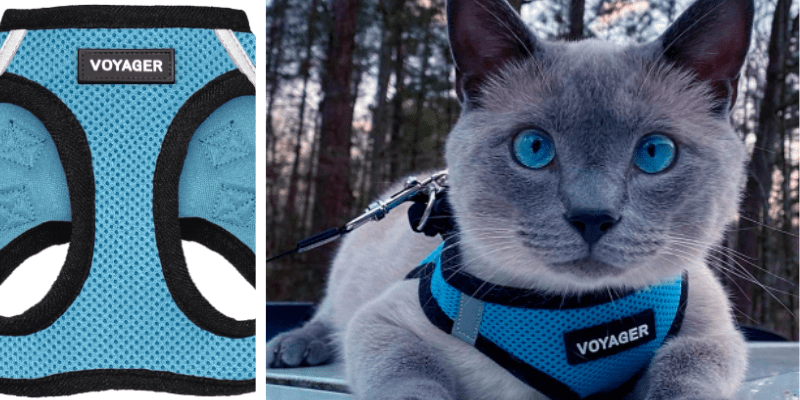
Voyager’s harness is both for the kings and queens of the world, as well as for those who enjoy chasing their own tail and snoring on the pillow. Made from a soft, breathable air mesh material, this lightweight pet harness is perfect for walks all year round. Two reflective bands on the sides of the harness enhance your pet’s visibility for those early morning and late evening strolls. The size ranges from XXXS to XL, so you will definitely find the right fit for your soon to be former couch potato.
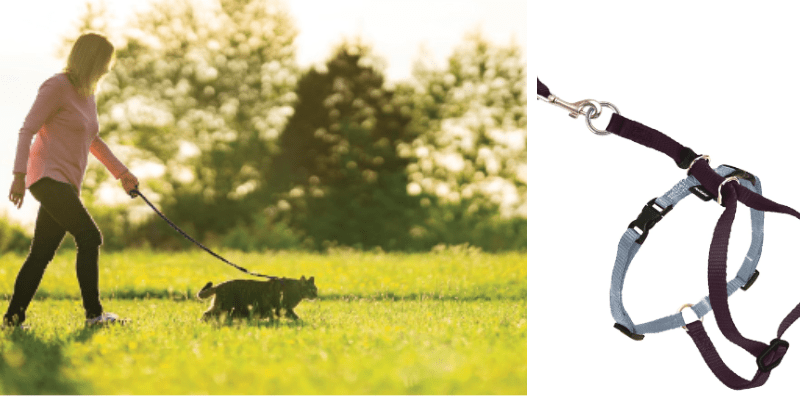
PetSafe harness is designed specifically for kitties, applying gentle pressure to the shoulders rather than the delicate neck or throat area for comfortable control. Two adjustment points allow cat owners to custom fit the harness to their cat’s unique body type. The stretchy bungee leash gives a little “give” to prevent harsh pulling or tugging for easy restraint. This harness from PetSafe, the leading U.S. pet product manufacturer helping millions since 1991, allows you to safely explore the outdoors together so you can both enjoy the mental and physical benefits!
FAQ
How long can cats stay in a harness?
Cats can safely wear a well-fitted harness for several hours at a time, but remove it after walks/outings. Don’t leave a harness on unsupervised long-term.
How long does it take for a cat to get used to a harness?
With positive reinforcement, most cats adjust to a harness within 1-2 weeks. Go slowly, rewarding calm behavior. It may take a month or more for some cats.
What are the best cat harness for long haired cats?
Choose lightweight material that won’t mat long fur. Wide straps also help prevent hair pulling.
What are the best cat harness for traveling?
Vest or jacket-style harnesses are most secure for containing your cat on trips. Look for strength and multiple connection points.
What are best cat harness for walking?
Durable, reflective hiking harnesses have heavy-duty hardware and distribute weight evenly.
*FTC Disclosure: This page contains Amazon Associate links. If you make a purchase after clicking on the links, Meowpassion will get a small commission at no extra cost to you. We are dedicated to finding the coolest products for cats, cat owners and lovers, and we never recommend anything that we don’t love or trust.

